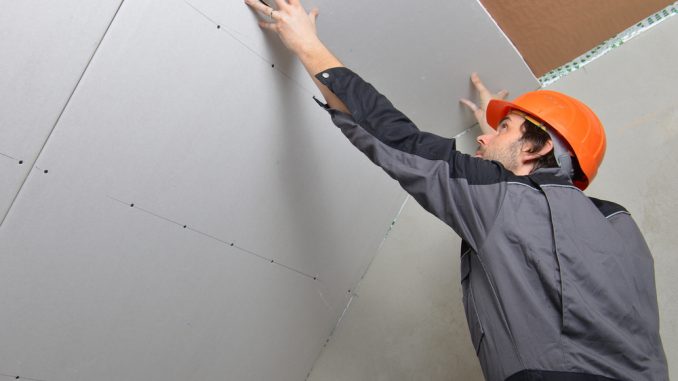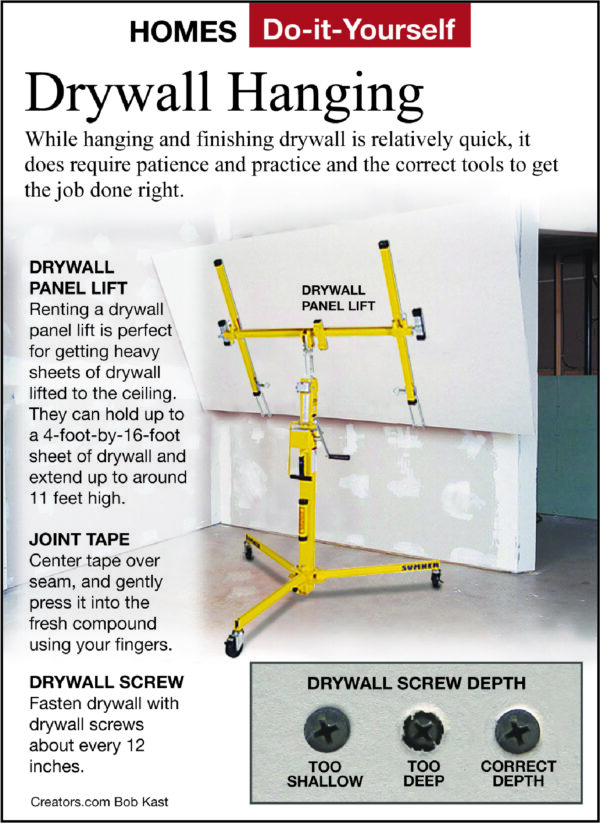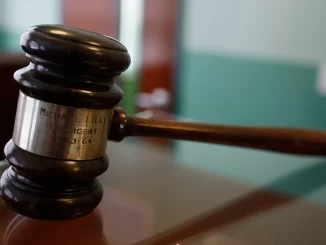
Dear James: Much of the drywall in my house is uneven and needs to be replaced. I plan to hang the drywall myself. Are there tools or fixtures that will make it easier for a beginner? —Noah L.
Dear Noah: Hanging drywall is not as difficult as most people think it is. Apparently, the original installer of your existing drywall didn’t do a good job. It is difficult to repair drywall that was not installed properly, so your decision to just replace it is the correct one.
Even if you are not experienced doing this, some minor imperfections won’t be extremely apparent. Most walls are painted with flat wall paint, making it difficult to see imperfections, especially at the joints. If you plan to paint some of the walls with semigloss paint, install drywall on those walls last so you are further into the learning curve.
One fact in the typical do-it-yourselfer’s favor is that drywall is usually painted with flat wall paint. When the finish on the wall is truly dull with no sheen, waviness is usually not as apparent. Finishing the wall with wallpaper can further hide imperfections.
It would also be wise to use overhead lighting, preferably from a center ceiling fixture. The light rays will hit the wall at a steep angle, so waviness will not create shadows or bright and dim areas. Try to avoid placing a table lamp close to the wall. This may create obvious shadows if the drywall job is wavy.
Now that some of the fear is gone, it is time to select your drywall tools. There are three basic steps to installing drywall, and there are tools specifically designed for each step. The first step is cutting the piece of drywall to the proper size. The second step is hanging the drywall on the wall studs or ceiling joists. The third step is finishing the drywall panel joints and all the corner edges.
To keep your tool costs lower, you should be able to get by with a utility knife, a 7-inch-long utility saw, a 3-foot straightedge, and a 25-foot tape measure. You do not saw drywall to cut it. You score it with a utility knife along a straight edge and then break it along the line. The utility saw is used to make specific holes or notches in a piece.
If you are doing the typical amount of drywall work occasionally on projects, the best drywall hanger tool (to hold it in place for nailing or screwing) is just a couple of friends. Large tools are available to lift and hold the drywall in place, but they are fairly expensive. If you really need one for these projects, it would be better to just rent one.
Once the drywall is cut to size and placed against the wall, it can be nailed with a drywall hammer or screwed into place. The best method is using a screw gun because screws do not pop out, and this tool drives them to the proper depth each time. When hanging drywall, the head of the screw or nail should not tear completely through the paper skin.
With the piece of drywall now attached, it is time to finish the joints. For this, purchase a stainless steel joint compound pan, a 6-inch joint knife, an 8-inch taping knife, a pole sander and sanding blocks of various grits.
If you are planning to do a lot of drywall work, getting a drywall tape banjo can really cut the time required to apply the joint compound to the tape. It also puts it on more evenly for a nicer job with less sanding.
Send your questions to Here’s How, 6906 Royalgreen Dr., Cincinnati, OH 45244, or visit Dulley.com. To find out more about James Dulley and read features by other Creators Syndicate writers and cartoonists, visit the Creators Syndicate website at Creators.com. Copyright 2021 Creators.com







Be the first to comment